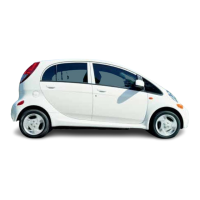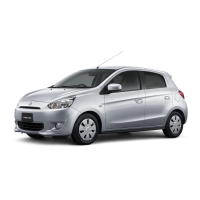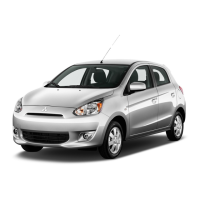Chapter 6 Emissions control systems 6-11
Connected to
Secondary Connected to
jvalve
.carburetor
therm0 valve
kiii!!?eA
Primary va’..-
ruw r
aExhaust gas outlet
-
m Exhaust gas inlet
7.5 EGR control valve (49-state models)
1 Carburetor vaccum
__.-- ..- - ~-
Therm0 valve .
7.8 EGR system (Canadian models)
5 The49state EGR system utilizes aconventional-type EGRvalve that
is controlled by carburetor vacuum in response to various throttle valve
openings (see illustration). Again, EGR flow is suspended at idle and
wide open throttle conditions. The thermal valve controls the vacuum
applied to the EGR valve.
6 In both systems, the sub-EGR control valve (see illustration) is
opened and closed by a linkage connected to the throttle valve. This en-
ables the sub-EGR valve to closely modulate the EGR flow according to
the size of the throttle valve opening.
Canadian models
Refer to illustrations 7.8 and 7.11
7 All engines built for use in Canada utilize an exhaust gas recirculation
system to reduce oxides of nitrogen in the vehicle exhaust.
8 With this system (see illustrMion), the exhaust gas is partially recir-
culated from an exhaust port in the cylinder head, through the EGR control
valve, to a port located in the intake manifold below the carburetor.
9 EGR flow is controlled by the EGR control valve and is varied accord-
ingtoengine load.Theflowisincreasedduring high loadvehicleoperation
and decreased to preserve driveability of the vehicle during low load oper-
ation.
10 With this arrangement, the EGR control valve is activated bycarbure-
tor vacuum, drawn from slightly above the throttle valve, so the EGR flow
is modulated to attain effective oxides of nitrogen reduction and is sus-
pended at idle and wide-open throttle conditions.
11 The vacuum to be applied on the EGR contrdl valve is controlled by a
thermal valve (see illustration), which senses the coolant temperature
andcutsoffthevacuumwhentheengineiscoldandavacuumvalvewhich
respond to vehicle load by detecting engine manifold vacuum which re-
sponds to vehicle load by detecting engine manifold vacuum.
Valve guide
7.6 Sub-EGR control valve
Filter
control
valve
7.11 Therm0 valve (Canadian models)
Fuel-injected mod&s
Refer to illustrations 7.12a and 7.12b
12 The EGR system on fuel-injected models is essentially the same as
the one on carbureted models. However, the EGR valve is computer-con-
trolled via the EGR control solenoid valve (see illustrations).
Check
Carbureted models
US models
Refer to illustrations 7.18, 7.19 and 7.20
13 Check all vacuum hoses for cracks and correct installation.
14 Start the engine (it must be completely cool) and run it at idle speed.
15 Touch the underside of the secondary EGR valve diaphragm and in-
crease the engine speed from idle to approximately 2500 rpm. No move-
ment of the secondary EGR diaphragm should be felt. If it does move,
which means the secondary EGR valve is opening, replace the therm0
valvewith a new one. Warning:
The valve maybe very hot- wearaglove
or use a rag to prevent your hand from burns.
16 Allow the engine to warm up until the coolant temperature exceeds
131 -degrees F.
17 Agam, touch the underside of the secondaj EGR valve diaphragm
and increase the engine speed from idle to approximately 2500 rpm. This
time, the secondary EGR diaphragm should move. If it does not move,
which means the secondary EGR valve is not opening, inspect the EGR
control valve and the therm0 valve.

